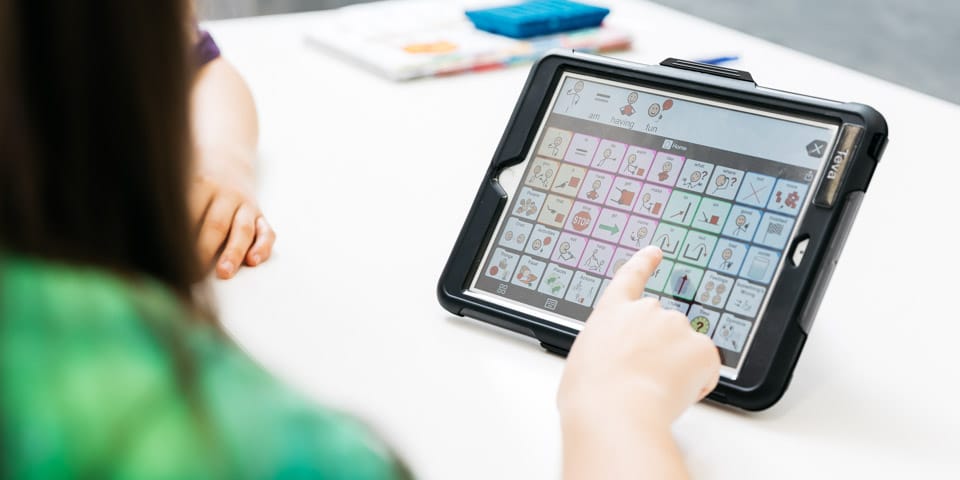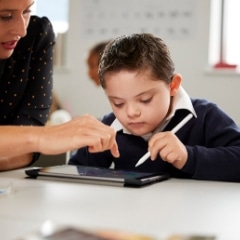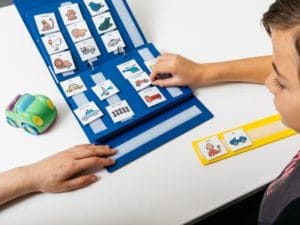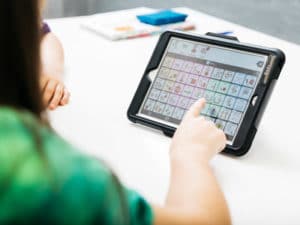Autism communication strategies
It may be true that I’m not good at eye contact or conversation, but have you noticed that I don’t lie, cheat at games, tattle on my classmates or pass judgment on other people?
How do people on the autism spectrum communicate?
How autistic people on the spectrum communicate is as varied as the experience of autism itself.
Communication is the exchange of information including ideas, needs, desires and feelings. Communication can also be made in written form and includes reading and writing.
One of the core criteria for autism is defined as persistent difficulty with social communication and social interaction.
Many children on the autism spectrum have a difference in their development of speech and language. For some, speech and language may be delayed, disordered or may not develop.
An absence of being able to understand language and express language using words and phrases may be the first indicator that an individual is suspected of having Autism Spectrum Disorder (ASD).
Communication also includes the understanding and use of non-verbal communicative behaviours (eg. eye-contact, and body-use, including personal space as well as gestures).
Types of communication include:
- Language: The way we represent information – what words mean and how we put them together.
Receptive – the understanding of language
Expressive – the use of language - Speech: A verbal means of communicating – using sounds to make words.
- Non-verbal methods: gesture, facial, expression, eye contact, etc.
- Pragmatics: The way in which individuals use language in social situations. It includes following the ‘unspoken’ rules of conversations including turn-taking.
Some people on the autism spectrum might find it hard to hold a conversation, or even start one. They can also have difficulty understanding facial expressions and inferring communicative intent based on context.
If you’re on the autism spectrum and are good at talking, you generally take things literally and mean what you say. You may have been told that you are always very honest. It also may mean that you find it confusing when people use language to hide their feelings or use language in a way that doesn’t make their meaning clear.
You might also be great at talking about your favourite topics, enthusiastically sharing lots of detailed information, or pointing out things that neurotypical people might not notice.
There are, of course, challenges for people on the autism spectrum when it comes to communication. These can be minimal – like learning to recognise social cues – or impact significantly, making all forms of communication challenging.
People with autism can also find it hard to filter out less important information and can become overwhelmed if too much information is presented. ‘Sensory overload’ can even happen through eye contact, which is why many people on the spectrum don’t like to make or hold eye contact with others.
And even those who are good at communicating can miss the unspoken aspects of conversation, which can make the world a confusing and isolating place.
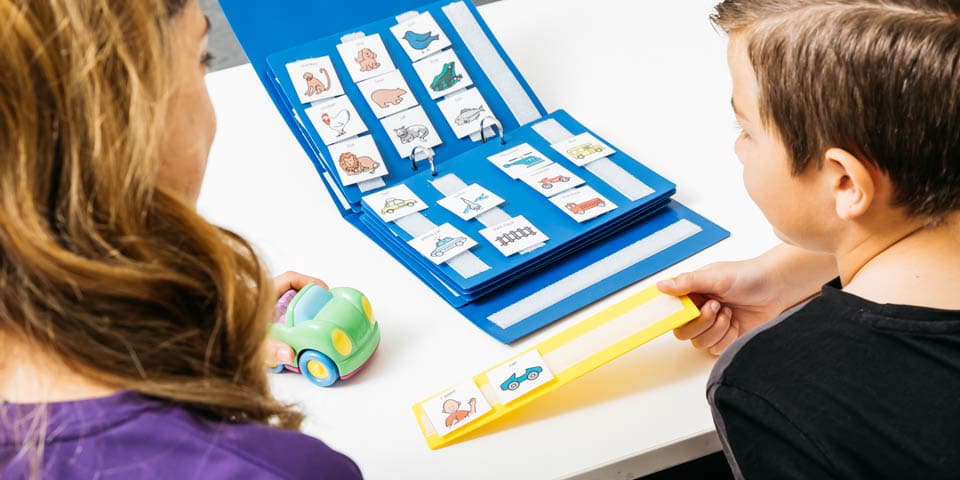
How does autism impact communication?
All people with autism experience ‘differences’ in communication, but the impact of these differences in everyday life varies.
According to Speech Pathology Australia, some children with autism achieve their preschool speech and language milestones, only to be identified as having autism when they start school where the social-communication demands increase.
These children may talk fluently but have significant difficulty with the social aspects of language, such as knowing how to initiate and maintain a conversation, and understanding meaning from other people’s body language.
For other children, ‘differences’ in communication are clearly seen early in life, with children not learning to talk without additional support.
Here are some communication characteristics used to help diagnose autism:
Young children (up to six years)
May be delayed in babbling and using words, may talk less or use speech in a repetitive way. This can include the use of learned phrases or scripts. They may also be slow to respond to their name, or not respond at all, and be unresponsive to social smiling. Some children with autism have difficulty using facial expressions and gestures to communicate. They may be fixated on their own interests and show little ability to share their interests with others.
Older children and teenagers (6-16 years)
Communication can be characterised by very limited use of language or they may use it excessively, they may have a ‘flat’ tone to their voice and repeat certain phrases over and over. They might talk ‘at’ others rather than having a ‘back and forth’ conversation, or talk mostly about their topics of interest. In interactions with others, they may not understand facial expressions and non-verbal cues, have difficulty with small talk and have a limited range of responses in social situations. They may also find it difficult to use gestures, facial expressions and eye contact when talking to others.
Adults (17 years and over)
Are often similar to teenagers and have difficulty engaging in ‘small talk’. People with autism can have a disordered pattern to acquiring language skills. While some individuals develop language and are able to use this independently, others may not develop functional communication and some may not ever verbally communicate.
Years before doctors informed me of my high-functioning autism and the disconnect it causes between person and language, I had to figure out the world as best I could. I was a misfit. The world was made up of words. But I thought and felt and sometimes dreamed in a private language of numbers.
There is strong evidence for the benefits of early intervention, beginning as early as possible in the child’s life.
There are many therapies designed specifically to build communication and interaction skills. Speech Therapists and Pathologists are the key professionals to assist with assessment and intervention of communication (and swallowing) delays and disorders.
It’s important to note that while being delayed to develop speech and language is a common trait of autism, not all children who have delays or difficulties with non-verbal communication are autistic.
An autism diagnosis takes into consideration many other criteria. However, if you are concerned about this don’t ‘wait and see’. Speak with Speech Pathology Australia on 1300 368 835 or a Speech Pathologist in your area: through local community health centres and not-for-profit organisations, or by calling private practices.
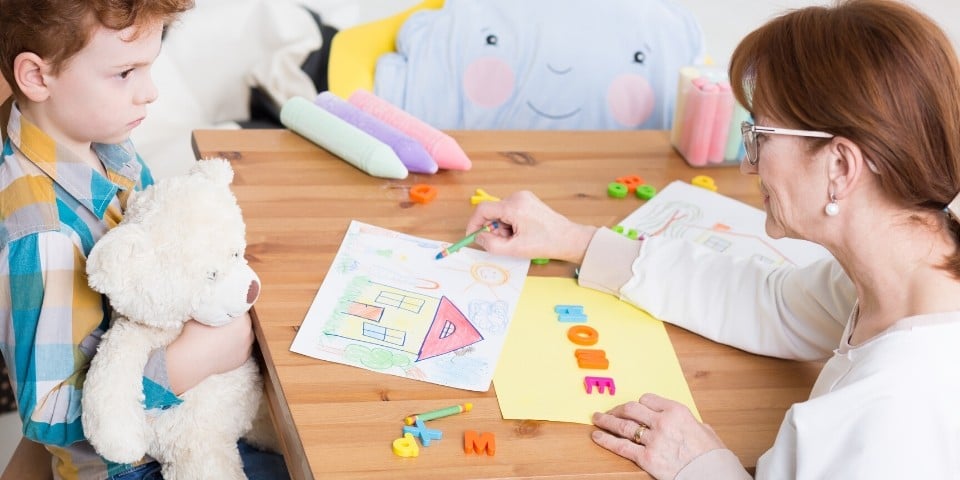
Communication challenges
Communication is not just talking. There are many visual and other cues that help us understand what another person is saying. So, it’s not just what someone says that helps us understand them, but how they say it, their facial expression, body language, gestures, eye contact and the context they’re saying it in.
People on the autism spectrum have difficulty processing non-verbal cues or may also use non-verbal communicative methods themselves. This means they might not hold eye contact or use body language in expected ways, they may misunderstand or misuse gestures or have a lack of, or different, facial expressions, which can make their social interactions challenging and sometimes confusing.
Echolalia
Many individuals on the spectrum use echolalia, which means they repeat words or phrases over and over, often using them without meaning or using them in an unusual context.
They might repeat the words of familiar people (parents, teachers), or they might repeat sentences from their favourite video.
Individuals may demonstrate immediate echolalia (a repetition of words or phrases straight after they hear them) and delayed echolalia (repeating words and phrases at a later time).
According to The Hanen Centre, there are many reasons an individual might use echolalia for a communicative purpose:
- To ask for things – a child might say “Do you want a cookie?” to ask for a cookie, as he’s heard others offer cookies this way before.
- To start an interaction or keep it going – a child might initiate a game of Hide and Seek by saying a line from the game, like “Ready or not, here I come!”.
- To draw someone’s attention to something – a child might draw attention to something he’s noticed by using a line he’s heard before to draw attention to something else, like “It’s a bird, it’s a plane, it’s Superman!”.
- To protest something – if a child imitates “You don’t want to wear those pants?” as his parent is getting out his clothes, he might really mean “I don’t want to wear those pants”.
- To answer yes – if a child imitates “Do you want some yogurt?” right after he’s been asked that question, he may actually want some yogurt and really mean “yes”.
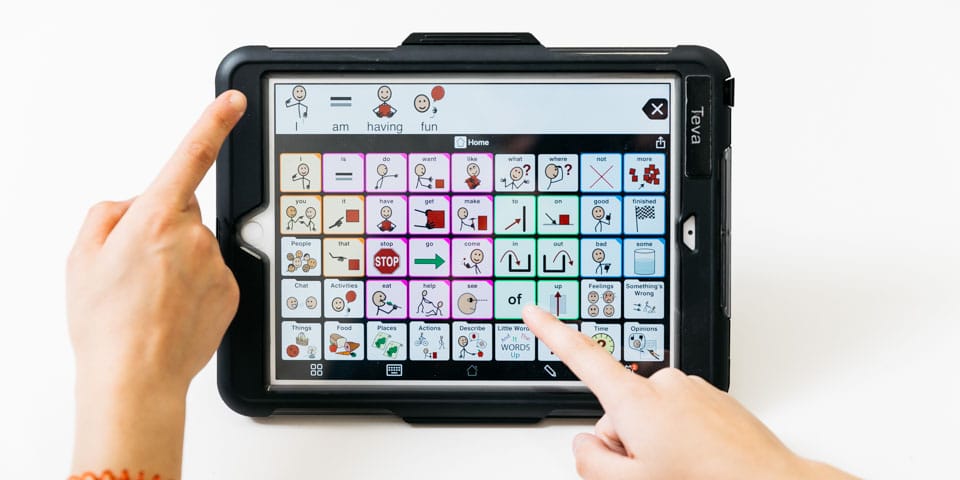
Autism communication strategies
There are a lot of tools that can help people on the spectrum develop their language and communication skills.
A Speech Therapist or Pathologist is the lead professional in the assessment of an individual’s understanding and use of language, and can provide information about you or your child’s level of language development. They can also provide support planning for intervention, and advise of which strategies can be best use to support the development of communicative skills.
ویژوال پشتیبانی می کند
Visual supports are tools that help communicate and build language skills. This can incorporate the use of symbols, photos, written words and objects to help people with autism to learn and understand language, process information and communicate.
Many people on the autism spectrum respond well to visual information and visual information can be processed and referred to over time, whereas spoken communication is instant and disappears quickly.
Visuals can involve communication books or boards that use images and/or words on cards to help the individual learn the word and its meaning. The individual can point to the image when they want to communicate. For example, if they are hungry, they can point to an image of food. As the child learns more symbols and words, they can use them to create sentences and to answer questions. Others can also use them to communicate with the child. The Picture Exchange Communication System can be used in the development of intentional and functional communication. Other forms of Alternative and Augmentative Communication (AAC) are discussed below.
Another autism communication support tool is known as a visual or picture schedule. This helps individuals learn the steps of a routine, like getting ready for bed. A series of pictures shows the steps in order and over time they learn each step.
Visual schedules can also be used to show a person on the spectrum what is happening next or show when there is a change in routine. As people on the spectrum generally don’t like change, this can help them prepare for a change and cope with it more easily. This enables the language surrounding change to be more easily understood and allow individuals to refer back to schedules throughout the task and throughout their day.
Augmentative and alternative communication
Augmentative and alternative communication (AAC), helps individuals who cannot talk or are very hard to understand. AAC can be used across all environments and at all times, it’s not only for use in therapy. AAC includes:
- Sign language
- Gestures
- Pictures, photos, objects, or videos
- Written words
- Computers, tablets, or other electronic devices
AAC can help many individuals with autism and can even assist with developing spoken communication.
There are two main types of AAC:
- Unaided AAC: Unaided AAC systems use hand signs and gestures, either with speech or on their own. Hand signing, such as Key Word Sign, is a form of sign language that can be used to assist with speech. It works by making the sign for a particular word, along with the sound and picture.
- Aided AAC: Aided AAC systems can be low or high-tech.
Speech generation devices either play pre-recorded words via a switch or button, or sound out text that is typed into them. Using the previous example, a child who is hungry can press the ‘food’ picture button and the device will say, ‘I want to eat’.
While these tools can be used to replace speech, they can also be used to help people develop speech. They do this by helping people to recognise sound patterns and can be used with visual aids to build language skills.
These systems can also help children learn words as they begin to associate the sound and picture with each other. They also help by slowing down communication, giving the child more time to process the information and avoid becoming overloaded.
How to support successful communication with people on the spectrum
DO THIS
Provide access to rewards, motivators, or reinforcers after engagement in structured tasks.
AVOID THIS
Using open ended or rhetorical questions: how are you feeling?
Asking questions that have multiple meanings or multiple responses, and are context dependent.
Using vague or conceptual descriptions – e.g. “he was salty” rather than “he was angry”
Asking the individual to stop behaviours such as flapping, rocking, or spinning.
Surprises and changing routines without forewarning or appropriate supports to cope with change.



